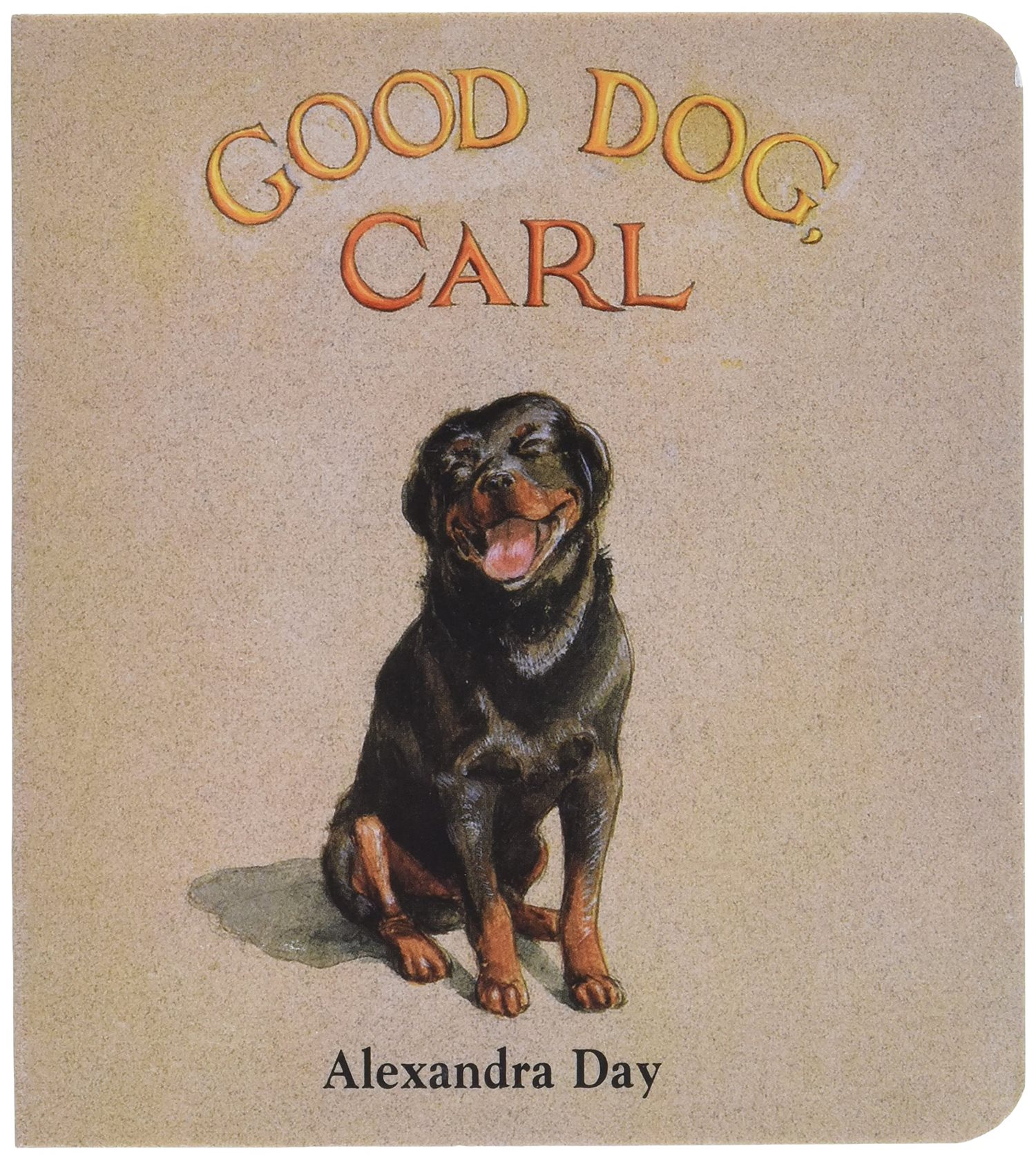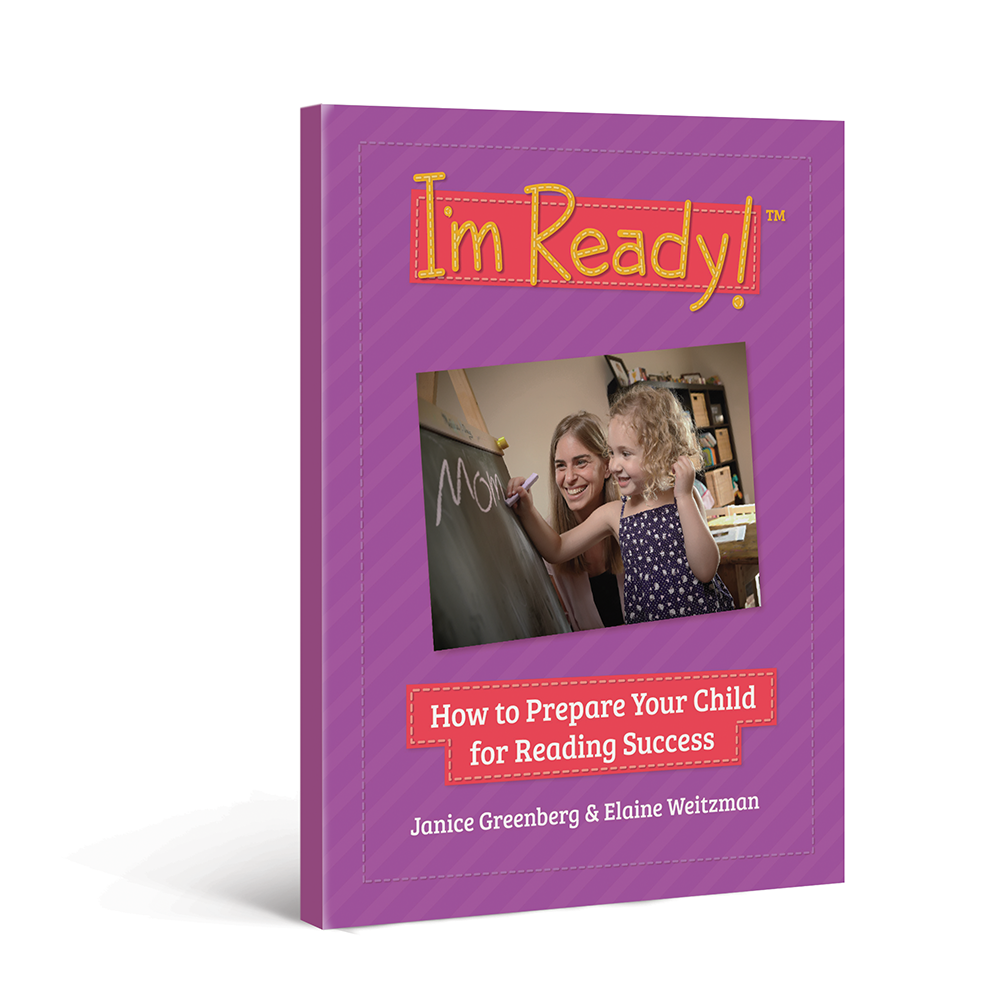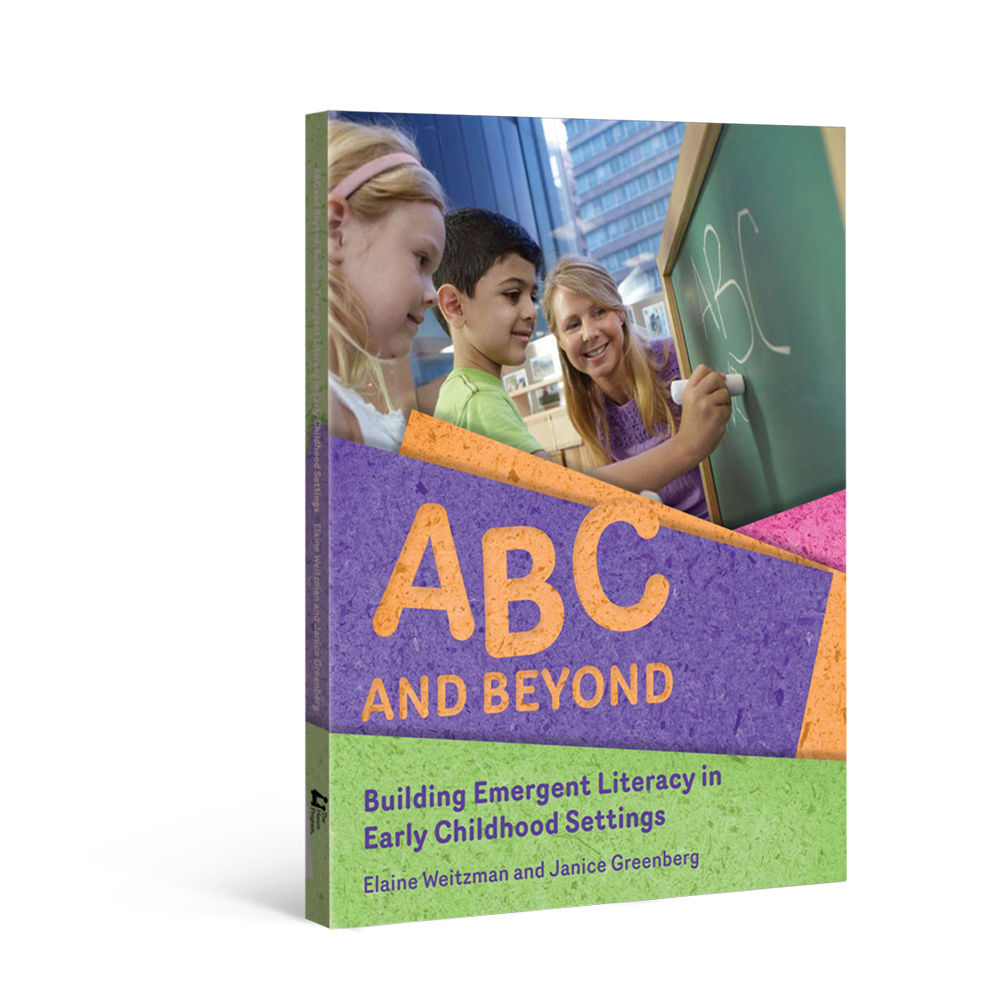This month's Book Nook topic is...
Build Interaction in Autistic Children with Good Dog, Carl

Turning book reading into a time for interaction is a great way to support communication and learning. Skills like requesting, commenting, understanding language, joint attention and conversation all develop within interactions.
What does an interaction involve?
Interactions happen when your child is engaged with you around a shared interest. They involve back and forth exchanges of actions, sounds, gestures, facial expression, pictures, and/or words. Even though interactions can take many forms, autistic children may have difficulty engaging in interactions. In this Book Nook, we’ll look at how an example of a wordless picture book can be used to help children stay engaged in an interaction for longer periods of time.
Let’s get started!
The Book:
Good Dog, Carl by Alexandra Day
Why we picked it
Good Dog, Carl is a beautifully illustrated wordless picture book centred around Carl, the good dog. Carl is tasked with babysitting and does a fantastic job – doing everything from entertaining, feeding and bathing the baby, and even cleaning up the house. A wordless picture book can be a great option for promoting interaction – because the pictures tell the whole story. In Good Dog, Carl, the detailed pictures show some pretty silly situations, creating many opportunities for interaction between you and your child.
Getting the interaction started
It’s important that your child is interested in the book and ready to engage. Show your child the book and give them a chance to explore it. When you’re ready to look at the book together, be sure your child is seated comfortably and get face to face.
Before saying anything about the book, the first step is to OWL. This is a Hanen strategy that stands for “Observe, Wait, and Listen”. This means pausing and waiting quietly to learn what your child is interested in. When you OWL, you may notice your child looking at a particular picture, pointing, laughing or saying something about a picture. The purpose of OWL is to find out what interests your child because, just like us, children on the autism spectrum will be much more likely to connect and interact when you show an interest in what is motivating to them.
Once you know what has caught your child’s attention, the next step is to Follow Your Child’s Lead. This means responding with interest to what your child looked at or communicated. You can do this by labelling the picture or making a comment. For example, if your child notices the baby climbing out of the crib you could say “Don’t fall baby” or “Uh oh!”. Then wait again for your child to say or do something, and there you have it – the interaction has begun! Many young autistic children are used to teachers and other adults directing them in what to do. But following your child’s lead and commenting on their interests can be a more supportive way to build more natural interactions that can last.
Keeping the interaction going
Once you have an interaction started, you’ll want to keep it going for as long as your child is interested. Continue to talk about what your child notices in the book using words or short phrases that describe the action. For example, if your child points to the picture of the dog dancing, you could say ‘Dance’ or ‘The dog is dancing’.
The more engaged your child is with you, the more opportunities they will have to learn!
Keep it fun
To keep the interaction going, be sure to keep it fun. Use your voice and facial expression to show enthusiasm. You can also use sound effects or fun words that relate to the action in the pictures. For example, you could say “Uh oh” when Carl and the baby knock over the table or you could say “Whee!” as they are running through the house.
Add action
Acting out a story is another great way to keep the interaction going while building your child’s understanding. As you and your child are looking at the pictures, feel free to pause to pretend to be like Carl or the baby – running, dancing, having a bath, putting on jewelry, or eating. Because the storyline in this book is very simple, pausing to do some fun pretending won’t take away from the flow of the story. In fact, it could lead to some great laughs and a richer interaction! Involving children in related activities is a great way to build vocabulary and understanding.
These are just a few examples of how you can turn book reading into a time for interaction. Sharing books this way not only helps your child learn early language and literacy skills, but it can also make the experience more fun and interesting for both of you!
Happy reading!
More Resources
The strategies in this Book Nook post are drawn from Hanen’s practical, research-based guidebooks for building emergent literacy. Explore the links below to learn more about how these guidebooks can support you.
For Parents I'm Ready! guidebook
I'm Ready! guidebook
For Educators ABC and Beyond guidebook
ABC and Beyond guidebook
